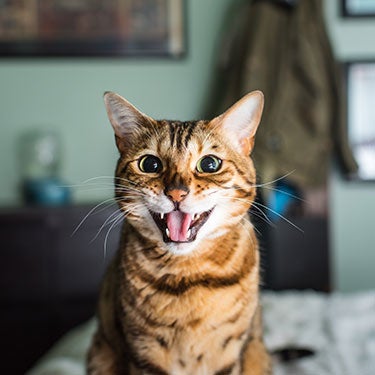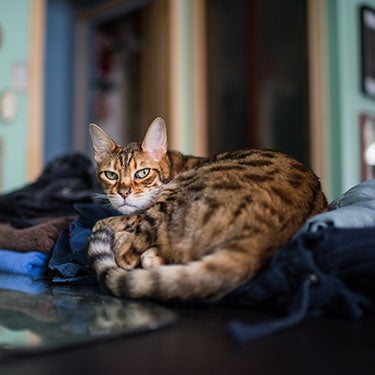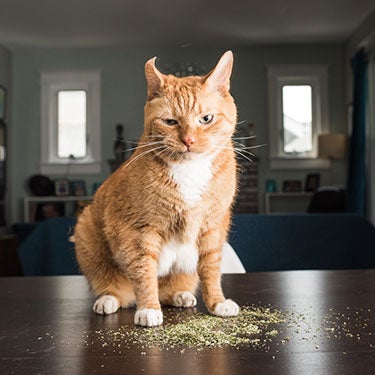Get That Motor Running
Why cats purrPurring 101
Meowing is the most common sound that cats make, but there’s another rumble that they’re commonly associated with too: purring. How do cats purr? According to researcher Karen McComb, a mammal-communications expert at the University of Sussex in the U.K., most animals make throat-based sounds using only their vocal folds, but cats can vibrate the muscles underneath their vocal folds very slowly during inhalation and exhalation, which produces the rumbling purr.
Cats often purr to communicate their emotions since, unlike humans, they’re facial expressions aren’t as effective at giving away how they feel (even though their facial expressions are super cute!). However, when cats purr, it’s similar to a person’s facial expression in that their purr will give you context clues to make an informed guess on how they’re feeling in the current moment. While most cats purr when they’re content, it is thought that purrs have self-healing and certainly self-soothing properties. As Sharon Crowell-Davis, a professor of veterinary behavior at the University of Georgia, explained, “You can have cats that are happy and content purring, but also a cat that’s injured or sick will purr.” How can you tell if it’s a joyful purr you’re hearing? Here are some good indicators to find out.
“I’m happy!” purr
If your cat is purring and looks relaxed, it’s a sign that they’re happy. Sometimes this comes in the form of their body language, such as when you see your cat on their back, or with its eyes half-closed in blissful contentment, or if their tail is mostly still. This can also be true if your cat is purring while soaking up some sun in the windowsill, or if you’ve just begun to pet your cat and hear that lovely little rumble. Purring usually means that your cat is a very happy furball, would probably share catnip with you and hug you for being such an excellent human companion.
“I’m in pain” purr
Many cats purr when they’re in pain as a way for the cat to soothe itself, similar to a child sucking their thumb. Some research suggests that purring actually helps cats get better faster. Purring causes vibrations within a cat’s body, which can help ease their breathing, lessen their pain or swelling, build muscle and repair tendons, and even heal bones and wounds.
“Hey Mom! I’m doing okay!” purr
If your cat is just a kitten, it may be purring for its mom. When kittens are only a few days old, they purr to let their mothers know where they are and that they’re doing okay. Purring is also a way for young kittens to be able to guide themselves to their mom’s body when they want their first meals. When kittens nurse, they can’t meow quite yet, so they show their contentment by purring, and their moms purr back to communicate safety and comfort. When cats are young, purring is also a way for kittens to bond with their moms. Similar to a mom singing a lullaby to their child, mother cats often purr alongside their young. If your kitten is a newborn, they may be purring to find her mom, or simply seeking sustenance and safety. Make sure that your kitten is well-fed, well-cuddled, and kept warm and cozy.
“I’m hungry! Feed me!” purr
McComb found that cats purr differently depending on whether they’re hungry or not. McComb found that the purr cats make when they’re ready to eat is combined with a (sometimes unpleasant) cry or mew, similar to the distress of a human baby’s cry. This is how cats communicate that they’re hungry, and can be easily distinguished from their regularly purring or meowing because of the added mewing sound. So, if your cat is purring and mewing, it’s the equivalent of your stomach rumbling, and it’s time to treat your furry friend to a nice bowl of tasty food.
Want to make your cat’s motor run? Use some Paw Points® to get them a fun little toy, like this Catnip Toy




